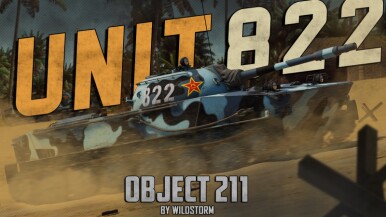



The Object 211 was a prototype developed by the Chinese People's Liberation Army in the late 1950s, designed to produce an effective amphibious tank. By 1957, the PLA's structure had been revised, integrating the Marines into the Army. The southeast coastal areas remained volatile as the Kuomintang-led Nationalist Army in Taiwan continued its goal of "counterattacking the mainland". Given that southern China is mountainous and features extensive rice paddies with intricate networks of waterways and rivers, medium and heavy tanks were deemed unsuitable, leading to the belief that amphibious vehicles would play a crucial role in defence.
In July 1958, a development codenamed "Project 211" was assigned, and China purchased Soviet PT-76s to acquire the necessary technology. The programme initially faced numerous challenges due to the limitations of the Chinese tank industry at the time, primarily stemming from World War II and the Civil War. However, by the early 1960s, the project proved successful and was ready for production as the Type 63 amphibious light tank. The in-game model represents the 4th prototype, equipped with the new Type 63 85 mm cannon, currently displayed at Block 4 of family housing units at Institute 201 (also known as the China North Vehicle Research Institute, 中国北车研究所).
Introduced in Update "La Royale", Object 211 offers players a unique perspective on Chinese tank development philosophies influenced by the Soviet Union during the late 1950s. Due to its amphibious nature, the prototype features light armour, providing minimal protection against light machine guns and artillery shrapnel. Nonetheless, Object 211's low profile and high speed grant players a tactical advantage by enabling them to secure strategic positions early in battle. The 85 mm Type 63 tank gun boasts impressive firepower, capable of quickly eliminating adversaries with well-placed shots.
| Ammunition | Type | Armor penetration (mm) at a distance: | |||||
|---|---|---|---|---|---|---|---|
| 10 m | 100 m | 500 m | 1000 m | 1500 m | 2000 m | ||
| APHEBC | 135 | 133 | 124 | 114 | 104 | 95 | |
| HE | 19 | 18 | 17 | 16 | 15 | 14 | |
| APCBC | 164 | 162 | 154 | 143 | 134 | 125 | |
| Belt | Belt filling | Armor penetration (mm) at a distance: | |||||
|---|---|---|---|---|---|---|---|
| 10 m | 100 m | 500 m | 1000 m | 1500 m | 2000 m | ||
| AP-I/API-T | 13 | 12 | 7 | 3 | 2 | 0 | |












Mobility | |
|---|---|
Protection |
|---|
Firepower | ||
|---|---|---|
